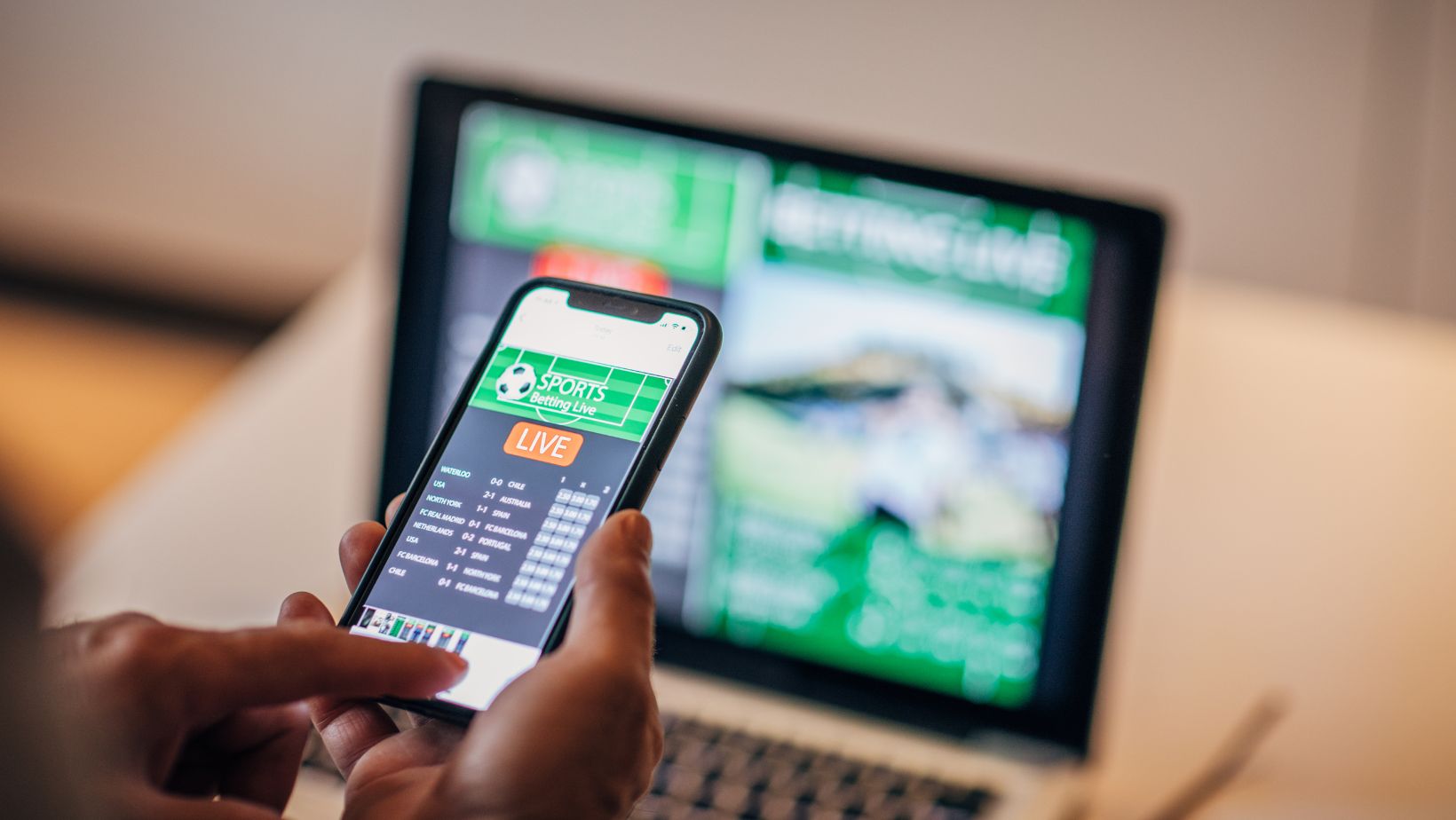
As screen sizes decrease, stakes rise and expectations shift, online casino sites are reimagining the gaming experience for the handheld era. It’s more than just portability these days; it’s all about rewiring priorities that’s stealthily shaping consumers’ playing, paying and perception of gambling in the digital space.
Mobile-first. Not long ago, the buzzword for app design sessions was that they were the whispered driver of profound change in the world of internet casinos. This is not about playing the odd slots on the move. This is the overhaul of the entire system—from the design of the interface to payment integration—driven by the habits of users who now log on less often from desktops than from their smartphones or tablets.
Mobile phone penetration has surpassed 85% worldwide and gambling behaviors have followed in the same direction. The static desktop tradition is now occasionally replaced by spontaneous, tap-and-play behavior, whether from the bench of a bus stop, during lunch hour or in the sanctity of one’s bed. The change has only altered where and when one plays—it has also changed what they will be expected of from an internet casino portal.
The Mobile Design Imperative
The biggest casino operators no longer create desktops and scale down their offerings. They make for the size of the mobile screen first. UIs are minimized. Clicks become taps and swipes. Even the loading is optimized differently, as seconds are more significant when gaming on 4G with just 12% battery left. But this sort of minimalism has nothing to do with skimping, of course. It’s about prioritizing speed, fluidity and even relevance: Bye-bye, endless sidebars and cluttered dashboards. What you do see is simple-to-navigate UX with the emphasis squarely on the game—or, more accurately, the wallet.
Layouts default to vertical orientations, with navigational patterns that follow the direction of the finger on small screens. Features that were once considered desktop necessities—hover menus, pop-up banners and floating chat windows—are now pushed to the background or repurposed for mobile convenience. Animations are more condensed. Text blocks are shorter. Font sizes are optimized not only for reading but also for devil-rapid scanning during burst sessions of play. The shift is also indicative of a bigger behavioral shift.

The App vs. Browser Tug-of-War
Not all mobile-first platforms are the same. Not all of them provide silky smooth animations and deeper integration with device functionality (fingerprint login, push notifications). Still, browsers have caught up with the arrival of Progressive Web App technology. With PWAs, users can bookmark sites on their home screen and enjoy near-app-like experiences without App Store gatekeepers in the way. All that being said, regulatory overtures occasionally tip the scale.
A few jurisdictions distinguish between browser-based platforms and mobile apps, which encourages some operators to focus more of their innovation on the latter. For consumers, though, it’s a matter of personal choice: some prefer the convenience of an app, while others value the anonymity of a browser window.
From Static Games to Real-Time Play
A mobile-first approach isn’t simply about compressing games onto smaller screens—it’s about adapting to the new habits of how people play. Attention is shorter. Sessions are more fleeting but more often repeated. And with it comes a greater need for immediacy. Their live betting has intervened.
No longer do fans need to wait for the cold, hard look of a random number generator. They want to deal with actual people, in actual time, from their devices. And operators have obliged with respectable betting on live streams of sports events with super-high-definition graphics, low latency and near-immediate wagering. At the heart of this trend is the increased demand for Real Money Casino Games, which are drawing in users seeking quick, high-velocity action.
Those games are now freed from the confines of desktop screen sizes; they’re optimized for thumbs and facial recognition logins and they bring the full force of the experience into any pocket anywhere in the world.
A New Standard for Authenticity
The ascent of Live Dealer Games Online is a shift in the perception of what is trusted. Algorithms and animations were once sufficient, but today it’s all about visual cues, human interaction and the haptic reality of observing a dealer shuffle cards. Mobile-first does not equate to less reality—it simply equates to reality being compatible with a vertical screen setting.
This is characteristic of the paradox of gambling on the move: it’s more personal in one way (less ritual, less setup), but it requires a higher emotional standard. The live dealer-type of casino resolves this by providing micro-interactions that are practically personal, even for single-player installations.
The Payment Experience Must Match the Play
If one can initiate a poker hand within three seconds, they will also anticipate the same for cashing out or cashing in. Handset-first sites are well aware of this anticipation and have overhauled their payment systems to stay on pace with it. Fingerprint transactions, key-code cash-outs and one-click KYC verifications have graduated from premium features to basic norms. Speed and ease of these processes are paramount to avoid moments of friction that could cause hindrances during play or frustration on the player’s part. But it’s not only about velocity—convenience is only sufficient for today’s mobile gamer. Ironclad security coupled with quick access is the underlying requirement and mobile-first platforms are evolving to support both. Biometrics, such as fingerprints and facial recognition, are currently more popular than traditional passwords because they are directly associated with the specific user and are much more challenging to hack.

Effectively, the payment process has become an integral part of the gaming experience itself. The more streamlined, secure and intuitive these processes are, the more seamless the overall casino experience is. In turn, the integration of payment systems mirrors the larger movement towards platforms that accommodate the realities of mobile usage: quick, security-aware and always accessible from the fingertips of the player.
Data Optimization Rather Than Data Obsession
The traditional model of collecting all possible metrics doesn’t apply as neatly in a world where everything is done first on mobile devices. The platforms need to be more discerning. The phone session could last up to five minutes. That doesn’t equate to being superficial—indeed, it does imply that operators need to approach engagement differently.
Rather than overwhelming users with proposals and pop-ups, intelligent platforms are opting for subtle stimuli—proposed wagers based on past behavior, limited personalization and seamless game switching. It is unobtrusive. It is quiet. And it is effective even when attention is split between apps, messages and the sporadic TikTok.
Regulation In A Narrowing Window
The move to mobile has forced regulators to play catch-up with a target that is constantly in motion. On the desktop, age verification and responsible gambling controls were bundled into extensive control panels. On the move, they must be just as effective but far less intrusive. The operators’ current dilemma is balancing the need to please regulators while also not compromising the gameplay. Geo-blocks, risk analytics enabled through AI and time-reliant session nudges all have evolved for the mobile channel. The objective is for users to remain unaware of it all, while protection and control are never compromised.
This delicate balance requires creative solutions that seamlessly integrate responsibility into the user experience. Age verification, for example, now typically utilizes document scanning through the phone’s camera coupled with in-the-moment biometric verification, automating what used to be a frustrating, manual process. Responsible gambling features—like deposit limits, time-outs and self-exclusions—are no longer buried in menus but easily accessible with a handful of taps or even triggered automatically based on behavior identified through machine learning algorithms. Such mechanisms operate in the background, notifying operators of potential problem gambling without interrupting the player’s flow.
What Comes After Isn’t Just Smaller—It’s Smarter
The mobile-first transition is not an evolutionary process for experts. It’s not about taking existing ideas and forcing them into new shapes. It’s about redesigning the entire digital gambling thought process from the ground up. From the onboarding process to the cashout after winning, everything is now designed for the shape of a smaller screen—and the pace of a quicker life. And while most of the attention remains focused on the glitz and glamour of the games and the massive jackpots, the actual narrative is unfolding behind the scenes: in code designed for responsiveness, in touch-anticipatory interfaces and on platforms that subtly blur the line between casino and cell phone. Because in this day and age, the home doesn’t simply fit into your pocket—it’s designed for it.


